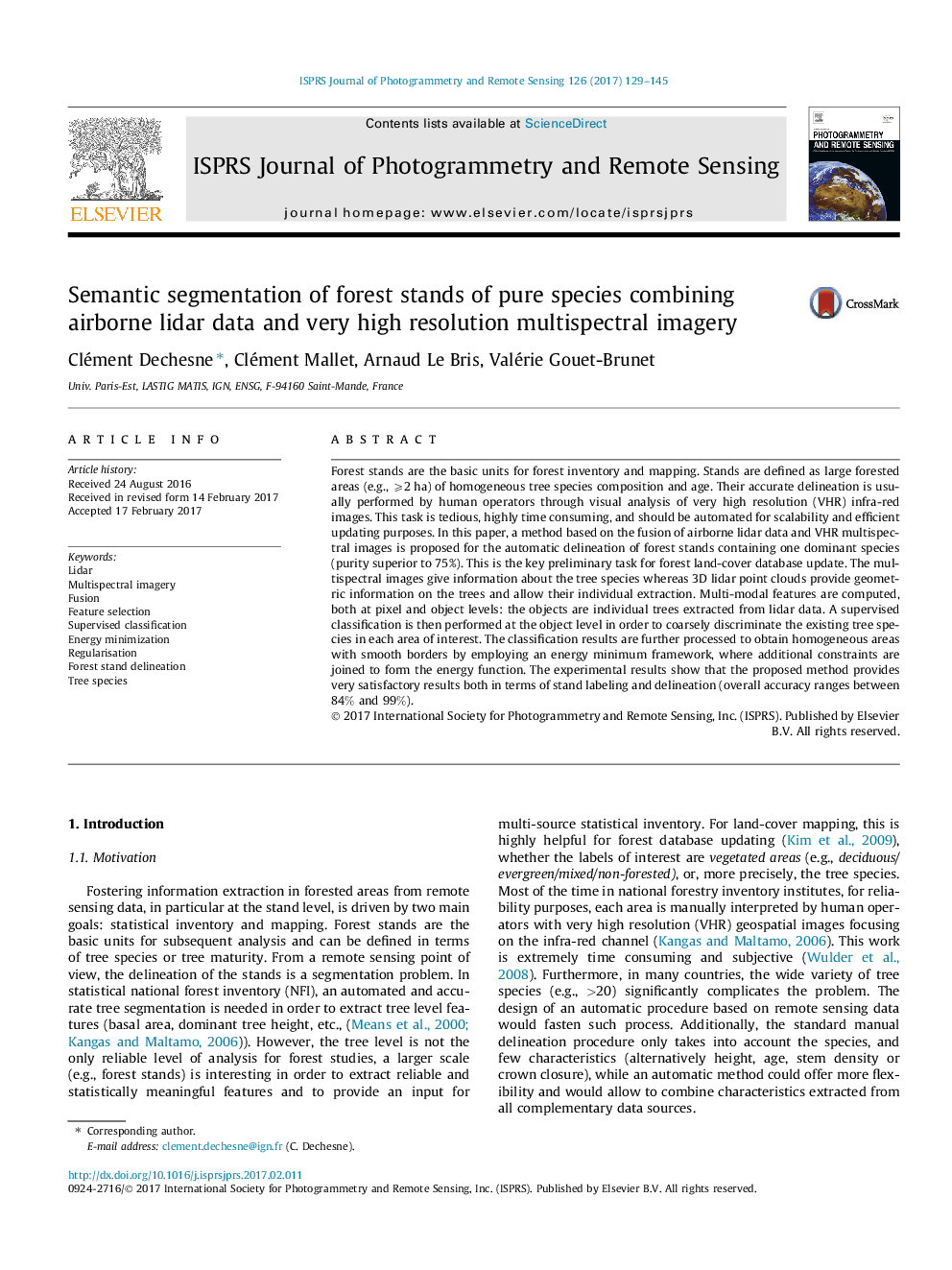| Article ID | Journal | Published Year | Pages | File Type |
|---|---|---|---|---|
| 4972947 | ISPRS Journal of Photogrammetry and Remote Sensing | 2017 | 17 Pages |
Abstract
Forest stands are the basic units for forest inventory and mapping. Stands are defined as large forested areas (e.g., ⩾2 ha) of homogeneous tree species composition and age. Their accurate delineation is usually performed by human operators through visual analysis of very high resolution (VHR) infra-red images. This task is tedious, highly time consuming, and should be automated for scalability and efficient updating purposes. In this paper, a method based on the fusion of airborne lidar data and VHR multispectral images is proposed for the automatic delineation of forest stands containing one dominant species (purity superior to 75%). This is the key preliminary task for forest land-cover database update. The multispectral images give information about the tree species whereas 3D lidar point clouds provide geometric information on the trees and allow their individual extraction. Multi-modal features are computed, both at pixel and object levels: the objects are individual trees extracted from lidar data. A supervised classification is then performed at the object level in order to coarsely discriminate the existing tree species in each area of interest. The classification results are further processed to obtain homogeneous areas with smooth borders by employing an energy minimum framework, where additional constraints are joined to form the energy function. The experimental results show that the proposed method provides very satisfactory results both in terms of stand labeling and delineation (overall accuracy ranges between 84% and 99%).
Keywords
Related Topics
Physical Sciences and Engineering
Computer Science
Information Systems
Authors
Clément Dechesne, Clément Mallet, Arnaud Le Bris, Valérie Gouet-Brunet,
